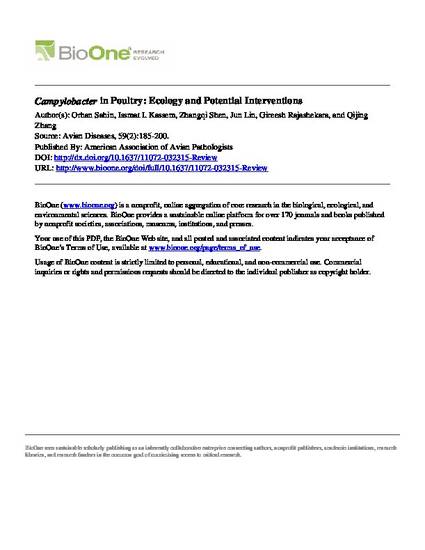
Avian hosts constitute a natural reservoir for thermophilic Campylobacterspecies, primarily Campylobacter jejuni and Campylobacter coli, and poultry flocks are frequently colonized in the intestinal tract with high numbers of the organisms. Prevalence rates in poultry, especially in slaughter-age broiler flocks, could reach as high as 100% on some farms. Despite the extensive colonization,Campylobacter is essentially a commensal in birds, although limited evidence has implicated the organism as a poultry pathogen. Although Campylobacter is insignificant for poultry health, it is a leading cause of food-borne gastroenteritis in humans worldwide, and contaminated poultry meat is recognized as the main source for human exposure. Therefore, considerable research efforts have been devoted to the development of interventions to diminish Campylobactercontamination in poultry, with the intention to reduce the burden of food-borne illnesses. During the past decade, significant advance has been made in understanding Campylobacter in poultry. This review summarizes the current knowledge with an emphasis on ecology, antibiotic resistance, and potential pre- and postharvest interventions.
Available at: http://works.bepress.com/qijing-zhang/10/

This article is from Avian Diseases 59 (2015): 185–200, doi:10.1637/11072-032315-Review. Posted with permission.